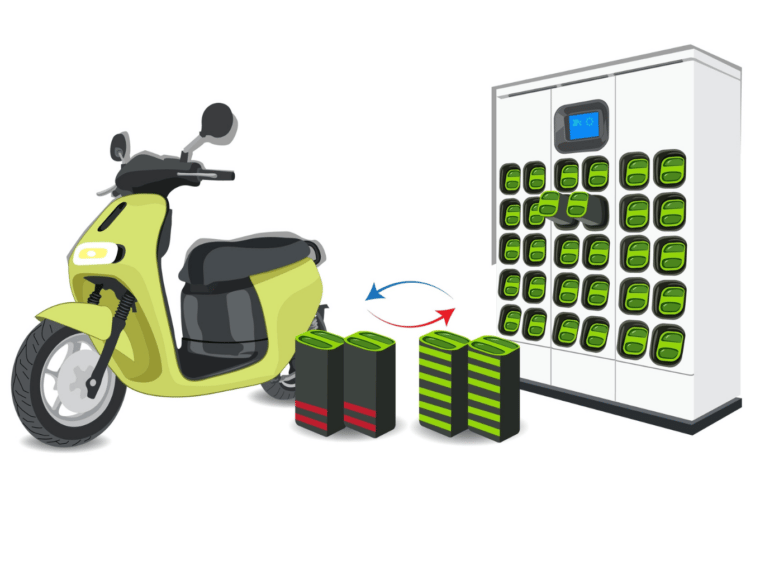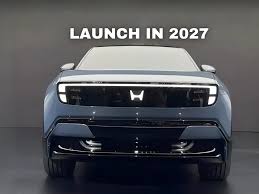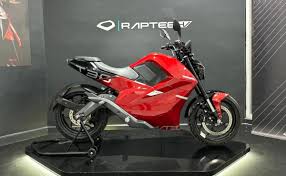Introduction
India is fast-moving towards electric mobility as part of its overall vision for a clean energy and sustainable future. The government is actively promoting the use of electric vehicles (EVs) throughout the country in order to cut carbon emissions, fossil fuel dependence, and air pollution in cities. According to this vision, the central government has launched incentives for the setting up of EV charging and Battery swapping stations facilities, especially at government offices and public places, in order to provide easy access for both public sector fleets and citizens.
Brief Context: India’s Push for EV Adoption and Clean Energy
- India plans to have a high level of EV penetration by 2030 as part of its National Electric Mobility Mission.
- The shift to EVs is part of India’s commitment to reduce greenhouse gas emissions and meet global climate targets.
- Investment in EV infrastructure is seen as essential to encourage mass adoption and address range anxiety among consumers.
- The government is focusing on integrating renewable energy sources, such as solar-powered charging stations, to make EV adoption environmentally sustainable.
New Government Notification of Subsidies on EV Charging and Battery Swapping stations
- The Centre has announced subsidies up to 100% of the cost for installing EV charging and battery-swapping facilities in the specified areas.
- The initiative is aimed at government offices, public sector units, municipal corporations, and public areas such as malls, bus stations, and parking areas.
- Slow and fast charging facilities, as well as battery-swapping networks, can be supported under this program.
- The initiative is part of a broader plan to establish a strong EV ecosystem and promote the ‘Make in India’ initiative for EV equipment.
Significance for Government Offices and Public Spaces
- Government offices can convert their vehicle fleet to electric, saving on operational costs and emissions.
- Public accessibility to charging and swapping facilities will spur citizens to embrace EVs by dispelling range and convenience issues.
- Encourages green citizenship and acts as a model for sustainability in city infrastructure.
- Raises the profile of EV take-up, prompting awareness and motivating private sector engagement.
Key Details of the Subsidy
The new program of the central government offers considerable financial assistance to promote the installation of electric vehicle infrastructure throughout India. The scheme extends up to full subsidy for proposed projects, and it is thus economically viable for public institutions and government offices to set up EV Battery swapping stations and battery-swapping facilities. By decreasing the initial investment cost burden, the government hopes to scale up the EV ecosystem quickly while at the same time making sure that public areas are supplied with the infrastructure required to accommodate the increasing volume of electric vehicles on the road.
Percentage of Subsidy: Up to 100% (Full Subsidy) for Specific Projects
- Specific projects can be subsidized at 100%, paying for all equipment, installation, and commissioning costs.
- Partial funding can be given for schemes that fall short of all the criteria or are undertaken in partnership with the private sector.
- Partial funding removes the largest obstacle—high upfront capital expense—to the uptake of EV charging and swapping technology.
- Promotes quicker rollout in well-visited public places and government offices where EV uptake is strategically significant.
Eligible Beneficiaries: Government Offices, Public Sector Units, Municipal Corporations, Other Public Spaces
- Central government and state government offices may establish charging and swapping points for their fleets.
- Public sector undertakings (PSUs) can establish infrastructure in offices, parking spaces, and operational centers.
- City corporations may place stations in city public spaces, bus stations, and parking complexes.
- Other public places, such as airports, railway stations, shopping malls, and educational institutions, are also qualified to provide easy accessibility to citizens.
- Eligibility promotes extensive coverage and ease, which in turn promotes public acceptance of EVs.
Covered Infrastructure: EV Charging Stations (Slow & Fast Chargers), Battery-Swapping Stations
- Slow charging stations (AC chargers) for overnight or long-duration charging in offices and public parking.
- Fast charging stations (DC chargers) for rapid top-up, suitable for public places with high EV usage.
- Battery-swapping stations to enable rapid replacement of EV batteries, especially for commercial or fleet use.
- It can be combined with renewable energy systems, such as solar panels, to minimize operating expenses and environmental footprint.
- Both independent and networked stations are accommodated, enabling scalability and long-term growth.
Objectives of the Policy
The government’s scheme of subsidy for EV charging and battery-swapping facilities is aimed not just to spread infrastructure but also to realize strategic objectives in India’s journey towards sustainable mobility. With a focus on public sector fleets and heavily trafficked public areas, the policy seeks to drive EV uptake, lower environmental footprint, and improve the nation’s energy security. The initiative is in tune with India’s wider climate objectives and represents a visionary approach to establishing an efficient and clean transportation infrastructure.
Promote Public Sector EV Fleet Adoption
- Public sector undertakings and government offices can substitute regular fuel cars with EVs, decreasing operational expenses.
- Public fleet adoption is encouraged by convenient access to subsidised charging points and battery-swapping facilities.
- Public fleet adoption inspires confidence and acts as a benchmark for adoption by private entities.
- Decreases transportation and operations challenges for government vehicles within urban and intercity drives.
Encourage Green and Eco-Friendly Mobility in Cities
- Public charging points make EVs more convenient for citizens, decreasing range anxiety.
- Enables citizens to embrace EVs, leading to a healthier urban environment and less noise pollution.
- Facilitates integration with urban planning schemes, including smart cities and green transport corridors.
- Promotes green mobility awareness and establishes India as a champion of eco-friendly urban transport solutions.
Less Fossil Fuel Dependence and Carbon Dioxide Reduction
- Conversion of government and public vehicles to EVs reduces overall fuel usage.
- Decreases greenhouse gas emissions, meeting India’s climate goals in global treaties.
- Reduces oil import dependence, enhancing energy security.
- Provides long-term advantages such as reduced carbon footprint for city mobility and a cleaner environment for citizens.
Implementation Guidelines
The success of India’s EV subsidy program hinges on the availability of clear and pragmatic implementation guidelines that enable rapid adoption. The government has drawn up a formal process to assist public institutions and government agencies in availing themselves of financial assistance while making infrastructure deployment efficient, transparent, and integrated with overall national and state-level EV development programs. By offering comprehensive procedures, eligibility standards, and timelines, the policy hopes to facilitate it for institutions to be able to support the establishment of a strong EV ecosystem.
Steps for Government Agencies to Apply for the Subsidy
- File a formal application via the specified central government portal or nodal agency responsible for handling the subsidy scheme.
- Supply information regarding proposed infrastructure, such as the type of charging or battery-swapping stations, anticipated capacity, and location.
- Affix necessary approvals, land/site ownership, and technical specifications.
- Get central nodal agency approval prior to undertaking procurement and installation.
- Ensure complete installation and avail subsidy refund or upfront payment as indicated by the scheme rules.
Eligibility Criteria for Sites and Operators
- Eligible sites are government offices, PSUs, municipal corporations, airports, bus stations, schools and educational institutions, and other public places.
- Operators may be government departments, PSUs, or sanctioned private parties with partnerships with public institutions.
- The infrastructure should have technical specifications prescribed by the government for safety, efficiency, and operability.
- Preference is given to areas with high potential for EV traffic or strategic locations for public access.
Timeline for Installation and Commissioning
- After the sanction, installation should be carried out within a defined timeframe (e.g., 6–12 months) to ensure subsidy utilization on time.
- Commissioning of the stations should involve testing, certification, and integration with networked monitoring systems if needed.
- Periodic reporting of progress to the nodal agency might be needed to monitor project implementation and performance.
Coordination with State EV Policies and Central Nodal Agencies
- Projects are to be in accordance with respective state EV policies to ensure coordination between central and state efforts.
- Central nodal agencies give policy directions, technical assistance, and monitoring to ensure uniform standards.
- Coordination provides optimized placement of infrastructure, prevents duplication, and maximizes public good.
- Facilitates the inclusion of renewable energy sources and smart-grid connectivity according to state and national energy policy.
Benefits to Stakeholders
The subsidy program of the central government on EV charging and battery-swapping centers is beneficial on a broad scale to various stakeholders. Reducing financial hurdles and promoting fast deployment of EV infrastructure not only makes the transition for government offices to electric fleets easy but also promotes public convenience and the overall EV ecosystem. The plan brings a positive spillover effect on government organizations, citizens, and the EV sector, complementing India’s vision for sustainable transportation and green energy uptake.
For Government Offices: Reduced Setup Expenses, Swifter Shift to EVs
- Max 100% subsidy lowers the capital cost involved in setting up charging and swapping points.
- Facilitates the transition of government fleets to electric vehicles without putting a burden on their budget.
- Quickens the timelines for electrification of the fleet, helping meet sustainability goals and improve operational efficiency.
- Streamlines the processes for procurement and installation through central nodal agency oversight.
For the Public: Greater Access to Charging & Swapping Stations
- Public access to charging and swapping stations solves range anxiety for EV drivers.
- Increases convenience for daily commuters, fleet operators, and long-distance travelers.
- Fosters increased adoption of EVs among citizens, helping to create cleaner urban spaces.
- Generates consciousness and confidence in EV technology, promoting broader engagement in green transport.
For EV Industry: Boost to Charging Station Operators, Manufacturers, and Employment Opportunities
- Offers a business opportunity for firms engaged in EV charger, battery, and allied equipment manufacturing.
- Promotes private sector operators to join hands with government agencies, increasing charging points.
- Facilitates employment generation in the installation, operation, and maintenance of EV infrastructure.
- Encourages innovation in battery-swapping technology, renewable integration, and smart charging solutions.
Examples / Case Studies
A range of pilot initiatives and already rolled-out programs indicate how the government subsidy plan for EV charging and battery-swapping centers is revolutionizing India’s public transport and mobility system. By situating infrastructure in government buildings and busy public spaces, these initiatives are giving insights into the real advantages of the policy. They are highlighting how support can enable faster EV take-up and deliver a model that can be rolled out across the country at scale.
Pilot Projects or Already Installed Subsidized EV Charging Points in Government Offices or Public Spaces
- Central government offices in Bengaluru and Delhi have set up subsidized slow and fast EV chargers for their fleet cars.
- Municipal corporations in cities such as Ahmedabad and Pune have established battery-swapping stations in crowded public spaces and transportation hubs.
- Metropolitan air terminals and railway stations have set up charging stations in the subsidy scheme to help commercial fleets and passenger EVs alike.
- Schools and hospitals are implementing charging infrastructure, showing public-private partnership and broader community involvement.
Effect on Local EV Adoption Rates
- Metropolitan areas with pilot projects have seen an observable rise in registrations of electric vehicles among commercial and private users.
- Availability of convenient battery-swapping and charging facilities lowers range anxiety, building confidence in EV adoption.
- Public understanding and acceptance of EV technology increase as citizens see government-driven efforts firsthand.
- Instills local business and private sector operators to invest in supporting EV infrastructure, building a network effect for fast adoption.
Challenges & Considerations
Although the government’s EV charging and battery swapping stations subsidy scheme has major advantages, there are a few problems that must be resolved to make the initiative a success. Public institutions and offices frequently have limited space and infrastructure, and the long-term viability of the stations relies on proper maintenance and alignment with renewable resources. Proper planning and coordination are needed to optimize the potential of the initiative and develop a robust, scalable EV system for India.
Space and Infrastructure Limitations in Public Offices
- Limited parking space in government offices and public buildings can limit the number of chargers or swapping stations that can be installed.
- Installation of charging stations in retrofitting existing infrastructure can be expensive and technically demanding.
- Urban planning and location selection need to weigh access for EV users against minimal disruption to office functions.
Maintenance and Operational Sustainability
- Routine maintenance is essential to provide safety, efficiency, and continuous functioning of charging and swapping stations.
- Manpower and training are necessary to ensure efficient operation and rapid resolution of technical problems.
- Operating costs over the long term, such as electricity, servicing of equipment, and battery replacement, must be budgeted for.
Integration with Renewable Energy Sources
- Solar panels or any other renewable energy sources can be integrated with charging stations to lower the cost of electricity as well as carbon emissions.
- Needs investment in smart-grid integration and energy storage systems for optimal management of loads.
- Adequate planning makes the stations operational during peak loads and less reliant on traditional power supply.
Future Outlook
The government subsidy program for EV charging and battery-swapping facilities has high chances of defining India’s long-term electric mobility profile. By facilitating quick infrastructure rollout, the program sets the stage for the mass adoption of EVs in urban and semi-urban pockets. With proper planning and coordination between central and state governments, the program can be rolled out across the nation, aiding India’s energy and environmental objectives while supplementing current EV incentive programs.
Potential for Scaling Up Across States and Cities
- Well-performing pilot projects can be scaled up in several cities, thus providing equal access to swapping and charging stations.
- Central and state governments can collaborate to identify high-volume corridors and strategic public locations for new installations.
- Scalable infrastructure can facilitate the expansion of private and commercial EV fleets like taxis, delivery fleets, and government fleets.
- Facilitates standardized procedures and compatibility between states, presenting ease for EV users across the country.
Role in Achieving India’s EV Adoption and Carbon Reduction Goals by 2030
- Helps India reach its target of realizing a substantial percentage of EVs among new car sales by 2030.
- Decreases total greenhouse gas emissions due to the easy transition from fossil-fuel cars to electric ones.
- Supports national climate targets under the Paris Agreement and India’s renewable energy programs.
- Encourages a cleaner, healthier city life by reducing air pollution and noise in cities.
Synergy with Other EV Incentive Programs (FAME India, State Subsidies)
- Augments the Faster Adoption and Manufacturing of Hybrid and Electric Vehicles (FAME India) scheme by adding charging infrastructure.
- Coincides with state-level subsidies and policies to promote EV uptake in particular states.
- Enables public-private collaborations by consolidating financial assistance across various schemes.
- Optimizes use of resources and provides sustained policy support for sustainable EV ecosystem development.
Conclusion
The subsidy program for EV charging and battery-swapping points announced by the central government is a major move towards building India’s electric mobility ecosystem. By providing up to 100% financial support, the program lowers the barriers to entry for government offices, public establishments, and other busy public places to embrace EV infrastructure. This not only speeds up fleet electrification and expands public access to charging infrastructure but also boosts the EV industry and advances sustainable urban mobility. Government departments and public sector institutions are urged to make full use of this scheme, with a wider reach, faster uptake of electric vehicles, and a cleaner, greener future for the nation.
FAQs
- Who is eligible to apply for the subsidy?
- Central and state government offices, public sector units (PSUs), municipal corporations, and other public sector institutions are eligible applicants.
- Some private players working with government organizations for public-access infrastructure could also be eligible, based on scheme guidelines.
- What is the upper limit of coverage?
- The scheme offers up to 100% subsidy for qualified projects, including the cost of equipment, installation, and commissioning.
- Partial funding might be offered to projects that do not entirely qualify under eligibility criteria or are operated in association with private operators.
- Can private organizations apply?
- Private operators are eligible if they collaborate with government offices or public institutions.
- Independent private projects for public-access charging might be entertained under specific state policies but must comply with central guidelines.
- Approval and installation timeline
- After approval of the application by the central nodal agency, installation needs to generally be carried out within 6–12 months.
- Commissioning involves testing, certification, and, where necessary, integration with networked monitoring systems.
- How does it complement state-level EV policies?
- The projects are planned to function alongside state EV incentives for a combined synergy with no duplication.
- Cooperation with state-level policies guarantees peak placement of charging stations, integration with renewable energy sources, and assistance to local EV adoption campaigns.





